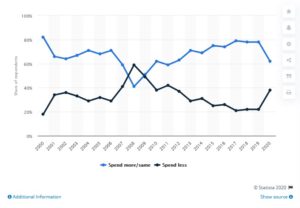Clearly, many Americans and Texans continue to struggle in the current health and economic environment. Texas (following national trends) COVID cases, hospitalizations, and deaths are up substantially from early fall (NY Times and TX DSHS). As I write this post, I’m home quarantining with my 10-year-old son, who was potentially exposed to COVID-19 at school (so far, we are still healthy). I certainly appreciate the fact that I have a job that allows me to work from home. Many people must work from specific physical locations and interact with the public in person, and I’m grateful that those individuals continue to show up every day.
Today, my son finished his homework and wanted to help with my work. He posits that the economy will improve when the vaccine is out. He realizes it will take some time to get the vaccine to everyone after nurses and other healthcare workers are vaccinated. But he thinks it will be quick, and people can go back to their jobs.
Some economists agree with him. A number of outlets (LA Times version here) reported that UCLA economists predict the decade ahead will post strong economic growth. Their estimations are based on strong vaccination by mid-2021, which seems in line with expectations by healthcare professionals who seem to think we could be on track for mass vaccination of the general public by summer.
I asked my son what he’s looking forward to when things are better. He said, “Going to school.” (He is stuck at home helping his mom writing an economics blog after all.) Then he said he would like to go to a restaurant again sometime. Eating out isn’t a bad place to start. Nationally, the Bureau of Labor Statistics reports that restaurant workers have one of the highest unemployment rates (13.8 percent), consistent with 15.0 percent unemployment across the entire leisure and hospitality sector. Accommodations (hotels, etc.) face a 21.5 percent unemployment rate. The unemployment rate for the mining, quarrying, and oil and gas extraction sector is 19.2 percent, which certainly affects the Texas economy.
The Bureau of Labor Statistics reports the unemployment rate has fallen to 3.8 percent as of the weekend ending December 12, 2020. While below levels earlier in 2020, that rate is well above the 1.2% rate for the same week in 2019. The BLS state report from December 5 showed Texas in line with national totals, at 3.0 percent unemployment. Still, as a large state, Texas was among the states with the most new initial claims in the December 12 BLS weekly claims report.
Retail also sales show mixed results and expectations. The Census Bureau announced yesterday (December 16) that retail sales for November were 7.1 percent higher than a year ago although down 0.8 percent from October. However, that figure was 29.2 percent higher for nonstore retailers (e.g., online retailers) but down 17.2 percent for food service and drinking establishments.
Statista has a cool graph showing that most people planned to increase holiday spending over last year, although the share planning to spend more dropped from the previous year. People haven’t planned to reduce spending since 2008. My son found this interesting and asked about that negative blip—time for an economics lesson on the great recession as well as the COVID recession!
It will be interesting to show him whether people really did spend more when the Census Bureau’s December retail report is released in January. His hypothesis is that people slowed their spending in November to save up for gifts in December.
In the meantime, we both wish you a happy and healthy holiday season and prosperous 2021.
